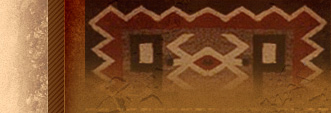 |
 |
| |
Burning Through the Roots, Part 1
|
|
| |
The vision of "Cosmos, Nature, and Culture" I share with you this evening is multidisciplinary, as suits the nature of this meeting and the organization that convened it. But, far more important, it is multi-knowing. That is to say, the vision I will share with you uses and integrates many different ways of knowing and learning. In Western culture the concepts of "multi-disciplinary" and "multi-knowing" are commonly conflated, but the difference between them is important.
An example of scholarship that is multi-disciplinary but not multi-knowing is a dialogue between science and religion that disallows information acquired through prayer unless it comes with substantiating empirical evidence that brings it into the logico-deductive epistemological system of contemporary academic culture. Such a process "legitimizes" one particular piece of information but simultaneously separates it from non-legitimizable information originally acquired the same way. Indigenous peoples refer to this process as the "decontextualization" of knowledge and find it extremely destructive. Another type of information legitimization is the common attempt to justify art or music classes in schools by analyzing their impact on students' SAT scores. In both of these examples, the "legitimized" information is real and worthwhile, but so is the information that can't be "legitimized". Furthermore, the information winnowed out during the process is frequently crucial to fully understanding and successfully applying the incomplete bit of information that enters the community knowledge base as "legitimized".
The vision I will share with you this evening is grounded in knowledge learned from Story, which Tapestry classifies as a "Mythic" way of knowing and learning. Other ways of knowing and learning in our typology are "Intellectual," "Experiential," and "Spiritual." Our typology is based on the Sacred Circle, common to many Indigenous peoples, that describes "the way the world works" -- from seasons to weather patterns to human lives (Figure 1). Tapestry applies the Circle to the ways that people know, learn about, and respond to the natural world. So although we're going to start with Story, we'll use and integrate all the ways of learning and knowing this evening. That being the case, I will briefly outline each of them as they appear on the Circle.
The Circle is laid out like a map, with the direction north at the top and the four arms of the central supports marking each of the cardinal directions. Each direction and its associated quadrant is represented by a color. Although the inherent richness of the Circle's meaning leads to variation in its depiction by different native nations, I have chosen what is considered standard coloration for the directional quadrants: yellow, red, black, and white. The crosspieces of the Circle don't just "mark" or "represent" the cardinal directions; they actually are the East, South, West, and North. When these crosspieces and the directions they embody come together, they create the Circle in the space around and between them. This Circle is the land itself. The dynamic, creative nature of the Center can be understood by noticing the verbs that describe it: it is the place where the crosspieces and directions come together to create the Circle. The Center is therefore the place where everything comes together or converges, and also -- simultaneously -- the place where new things emerge.
|
|
|
|
|
|
 |
|
|

